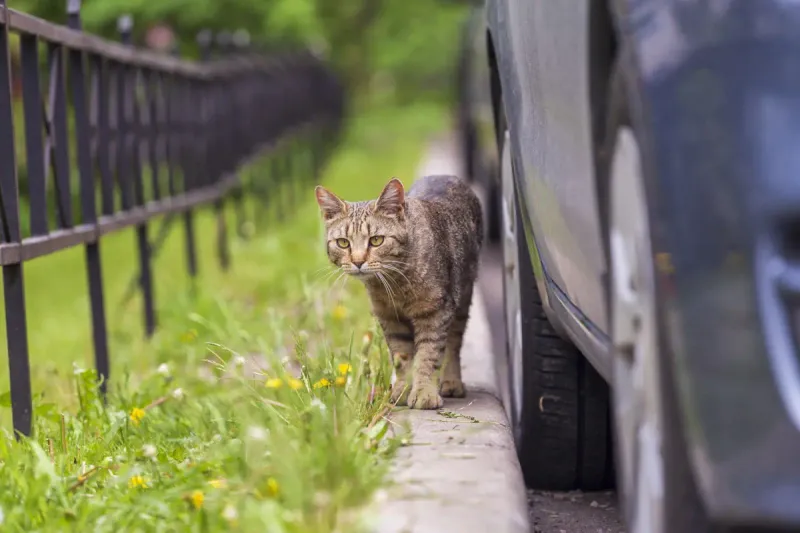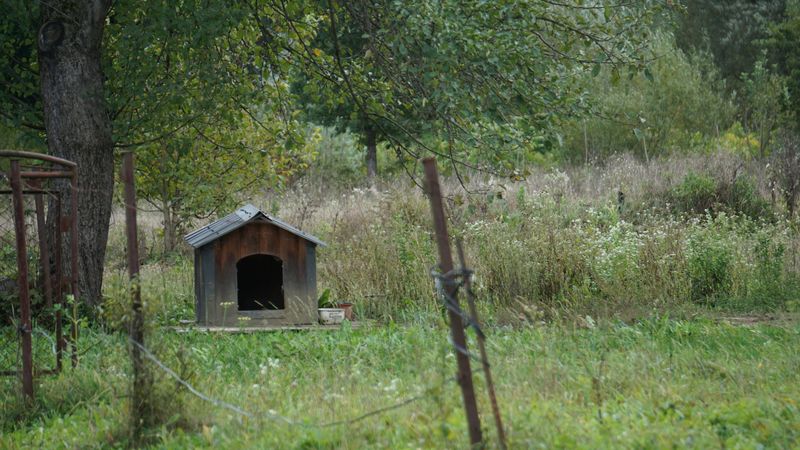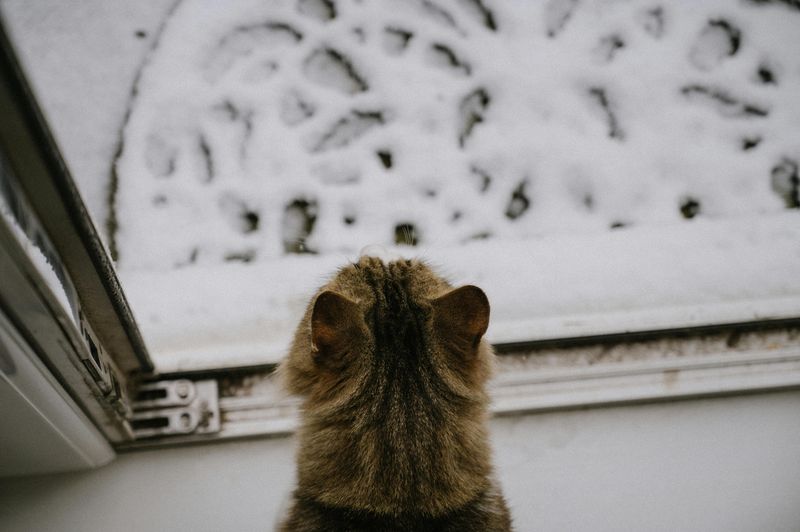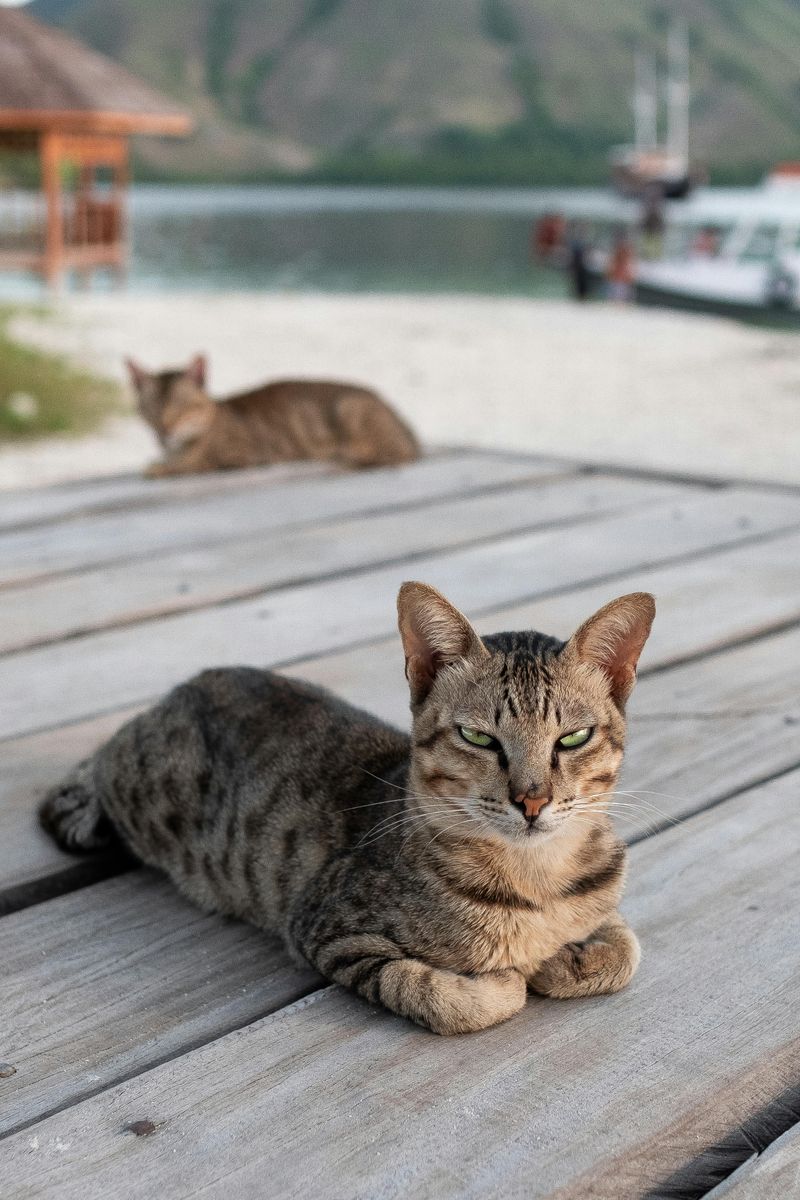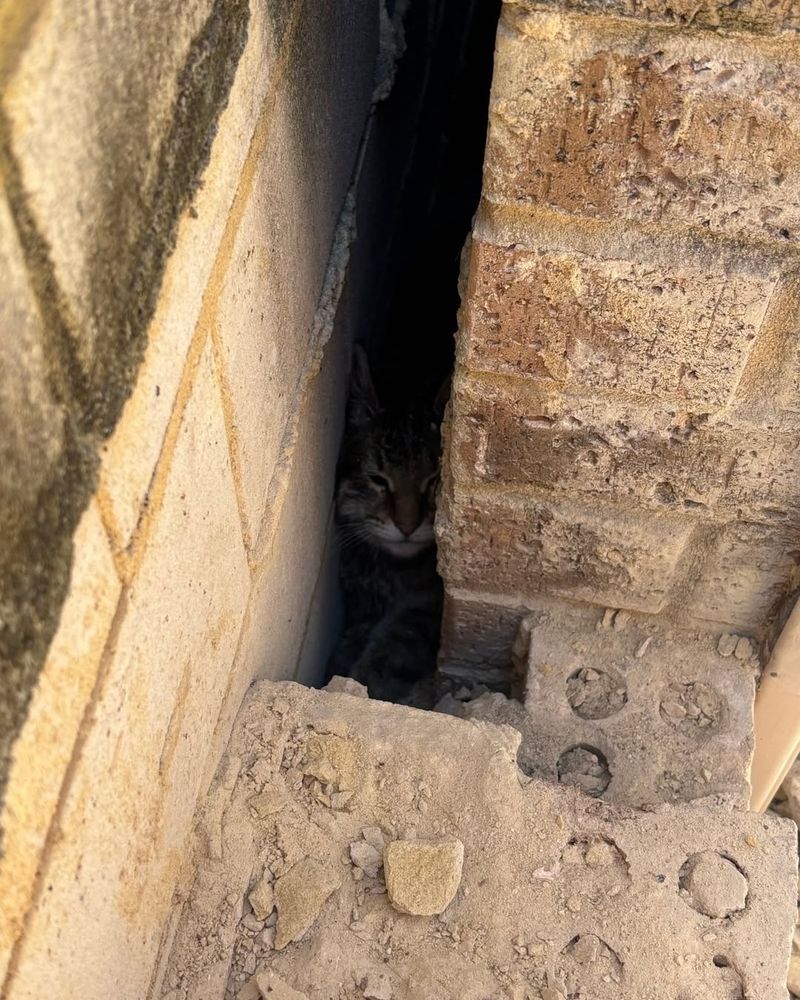📖 Table of Content:
- 1. Busy Roads and Highways
- 2. Bodies of Water (Lakes, Rivers, and Ponds)
- 3. Open Fields with No Cover
- 4. Loud Industrial Areas (Factories, Construction Sites)
- 5. Dog-Dominated Territories
- 6. Snake-Infested Regions
- 7. Extremely Cold or Snow-Covered Areas
- 8. Overcrowded Human Spaces (Concerts, Markets, Large Gatherings)
- 9. Sandy or Unstable Ground (Beaches, Loose Soil)
- 10. Areas with Strong Chemical or Gas Smells
- 11. Predator-Dense Areas
- 12. Tightly Enclosed Spaces with No Escape Routes
- 13. Heavily Polluted Areas (Dump Sites, Garbage-Filled Streets)
- 14. Windy and Storm-Prone Open Spaces
- 15. Brightly Lit and Patrolled Areas (Airports, High-Security Zones)
Felines are naturally inquisitive creatures, always eager to explore their surroundings. However, despite their adventurous spirit, they are also highly cautious and aware of potential dangers. Certain outdoor environments trigger their instincts, causing them to stay away to protect themselves from harm.
Some locations present physical threats, such as busy roads, predator-heavy areas, or places with harsh weather conditions. Others simply make them uncomfortable, like loud, crowded spaces or unstable terrain. By recognizing these environments, cat owners can better understand their pet’s natural behaviors and take steps to keep them safe.
Knowing which areas cats instinctively avoid can help prevent accidents and reduce stress for both felines and their caretakers. Whether it’s a high-traffic street or a snake-infested region, these places pose risks that most cats would rather not face.
1. Busy Roads and Highways
The constant roar of vehicles and the rush of speeding cars are intimidating to these sensitive creatures. Cats rely heavily on their acute hearing and sharp reflexes to navigate their environment, and the overwhelming sounds of traffic can easily overwhelm them. Furthermore, the risk of accidents is high on these roads, making them unsafe for our feline friends. They prefer quieter, more predictable environments where they can move safely without unexpected interruptions.
2. Bodies of Water (Lakes, Rivers, and Ponds)
The unpredictability of water, with its potential for sudden movements and splashes, can be unsettling for them. While some cats may venture near the shore, most will keep a safe distance. Their aversion to water is partly due to their grooming habits, as getting wet can disrupt their meticulously maintained fur. Additionally, water bodies often house other potential threats, like larger wildlife, adding to their apprehension about these environments.
3. Open Fields with No Cover
Open fields with no cover leave cats feeling exposed and vulnerable. In such environments, they lack the trees or bushes needed for quick retreats or hiding spots. Cats are both predators and prey, so they instinctively seek areas that offer concealment and protection. Without cover, they are more visible to potential predators, and the lack of escape routes increases their anxiety. As a result, these open spaces are often avoided unless they are certain of their safety or accompanied by a trusted human.
4. Loud Industrial Areas (Factories, Construction Sites)
Loud industrial areas like factories and construction sites are filled with overpowering noises and unfamiliar machinery. The cacophony of sounds is distressing to cats, whose sensitive ears pick up even the slightest noise. The constant clanging and rumbling can be overwhelming, causing them to seek quieter places. Moreover, the unfamiliar environment and presence of large equipment pose additional threats. Cats prefer environments where they can predict and control their surroundings, making these industrial zones less appealing.
5. Dog-Dominated Territories
Cats generally prefer to avoid areas dominated by dogs, as they may see them as potential threats. In places like parks where dogs frequently play, cats are cautious and wary. Dogs, with their high energy and sometimes unpredictable behavior, can be intimidating. Even if a dog is friendly, the mere presence of multiple dogs can be stressful for a cat. They value their personal space and prefer environments where they feel in control, so dog-heavy areas are often sidestepped in favor of more feline-friendly spaces.
6. Snake-Infested Regions
Snakes pose a real threat, and many cats have an innate wariness towards these slithering creatures. The risk of venomous bites or constriction is a real concern. Cats’ sharp senses may alert them to the presence of snakes, but the unpredictability of these reptiles makes them a formidable danger. As natural hunters, cats are cautious about becoming the hunted, and regions known for snake activity are typically avoided to ensure their safety.
7. Extremely Cold or Snow-Covered Areas
Their fur, while insulating, is not always adequate for severe cold temperatures. Snow can hide potential dangers, such as ice or concealed predators, making navigation risky. Moreover, the cold can affect their sensitive paws, and prolonged exposure can lead to discomfort or frostbite. Cats are known for their preference for warmth, so they instinctively avoid areas where the cold is intense. They seek out warmer, more hospitable environments whenever possible.
8. Overcrowded Human Spaces (Concerts, Markets, Large Gatherings)
Spaces like concerts, markets, or large gatherings are overwhelming for cats. The noise, bustling activity, and plethora of unfamiliar scents can be sensory overload. These environments provide little opportunity for escape or solitude, which cats often seek. Cats prefer tranquil and predictable surroundings, and the chaos of a crowded place can be unnerving. The constant movement and potential for being accidentally stepped on or cornered make these zones less appealing to them.
9. Sandy or Unstable Ground (Beaches, Loose Soil)
The shifting surface of sand can be unsettling, making it difficult for cats to move quickly and maintain their balance. Additionally, sandy environments often have unfamiliar scents and hidden objects that can be dangerous. This instability can make cats feel vulnerable, as they prefer solid ground where they can rely on their agility. Areas with stable footing are more favorable to their natural instincts.
10. Areas with Strong Chemical or Gas Smells
Areas with strong chemical or gas smells can be off-putting to cats, whose sense of smell is incredibly acute. Fumes from chemicals, gases, or industrial waste can be not only unpleasant but also harmful. Cats are sensitive to changes in their environment, and strong odors can signal danger or contamination. These areas lack the natural scents that cats find comforting, prompting them to seek cleaner, more familiar surroundings. Safety is paramount, so avoiding these regions is a natural instinct.
11. Predator-Dense Areas
Cats, who are both hunters and targets in the wild, avoid predator-dense areas. Such regions may include forests or areas known for larger predators. The threat of being preyed upon is genuine, and cats are instinctively aware of this. Their survival instincts drive them to avoid places where they are outnumbered or overpowered. Cats prefer environments where they can be the dominant force, or at least have a fair chance of escape if threatened, making these areas less frequented.
12. Tightly Enclosed Spaces with No Escape Routes
Cats are typically wary of tightly enclosed spaces with no escape routes. Such environments can make them feel trapped and anxious. While cats enjoy exploring nooks and crannies, they prefer to have a clear exit strategy. The inability to retreat quickly can be distressing, as cats value their independence and freedom of movement. They are more comfortable in spaces where they can easily maneuver or escape if needed. Enclosed spaces without these options are generally avoided.
13. Heavily Polluted Areas (Dump Sites, Garbage-Filled Streets)
The unsanitary conditions and overwhelming odors make these places unpleasant. Cats are naturally clean animals and prefer environments that match their grooming habits. Pollution can pose health risks, from toxic substances to sharp objects hidden among the debris. The potential for injury or illness is a strong deterrent, prompting cats to avoid these unhygienic environments in favor of cleaner, safer areas.
14. Windy and Storm-Prone Open Spaces
The unpredictability of storms, with their loud thunderclaps and potential for lightning, can be terrifying. Cats are sensitive to changes in weather and prefer stable conditions. Strong winds can also make navigation difficult, blowing debris and making them feel vulnerable. Finding shelter becomes a priority, leading them to seek out more secure environments where they can stay protected from the elements.
15. Brightly Lit and Patrolled Areas (Airports, High-Security Zones)
Constantly patrolled areas, such as airports or high-security zones, are places cats often avoid. The continuous exposure to bright lights can be overwhelming, affecting their night vision. Additionally, the presence of security personnel and surveillance can make cats feel conspicuous and insecure. These areas usually lack the quiet and solitude that cats crave, making them less appealing. Cats prefer environments where they can blend in and move unnoticed, so brightly lit areas are typically sidestepped.

